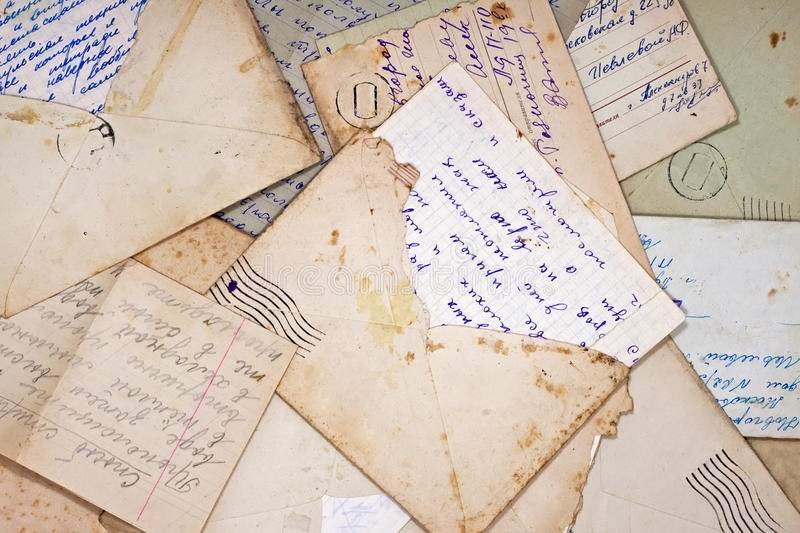Table of Contents
LETTERS IN LITERATURE: MIDDLE GRADES
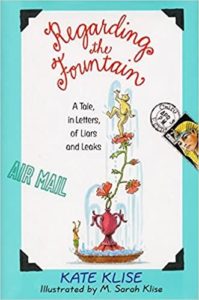 |
In Kate Klise’s Regarding the Fountain: A Tale, in Letters, of Liars and Leaks (HarperCollins, 1999), the water fountain at Dry Creek Middle School has irrevocably bitten the dust. To design its replacement, the school principal hires the flamboyant and outrageous Florence Waters (who agrees with the Dry Creek fifth-graders: a real fountain should have a root-beer dispenser, goldfish, lots of spraying spouts and spiggots, and a place to toss pennies). The story is told through letters, postcards, memos, faxes, newspaper clippings, and bulletin board notices, which make it all even funnier. There are several other Klise titles in the same format for ages 8-12. |
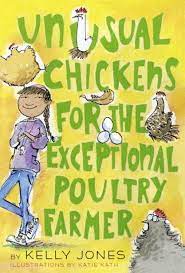 |
By Kelly Jones, Unusual Chickens for the Exceptional Poultry Farmer (Yearling, 2016), a tale written in letters, twelve-year-old Sophie and family have moved from Los Angeles to the farm they’ve inherited from a great-uncle – where his truly unusual chickens (with superpowers?) begin to come home to roost. And there’s lots of information about chickens. A great read for ages 8-12. |
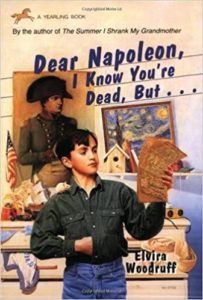 |
In Elvira Woodruff’s Dear Napoleon, I Know You’re Dead, But… (Yearling Books, 1994), ten-year-old Martin gets mysterious letters – via a “secret time-travel courier” – from people in the past, among them Napoleon, Thomas Edison, Abraham Lincoln, and Vincent Van Gogh. For ages 8-12. |
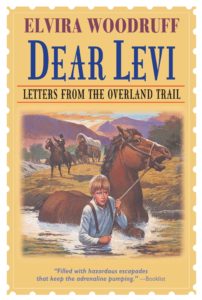 |
In Elvira Woodruff’s Dear Levi: Letters from the Overland Trail (Yearling, 1998), 12-year-old Austin, traveling to the Oregon Territory by wagon train, writes letters home to his younger brother Levi in Pennsylvania. Also see Dear Austin: Letters from the Underground Railroad (Yearling, 2000), in which Levi, 11, writes older brother Austin about a harrowing trip south to rescue a black friend’s sister from the slave catchers. For ages 8-12. |
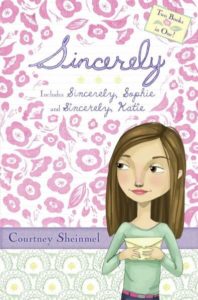 |
In Courtney Scheinmel’s Sincerely (Simon & Schuster, 2011), 11-year-old Sophie lives in Manhattan and her school-assigned penpal Katie, lives in California. Sophie’s parents are divorcing and she’s unhappy at the all-girls private school where she’s just been rejected by her erstwhile best friend; Katie is having a hard time because her best friend, Jake, is showing interest in another girl. Sophie and Katie both find help and comfort through the penpal letters that lead to a growing long-distance friendship. For ages 8-12. |
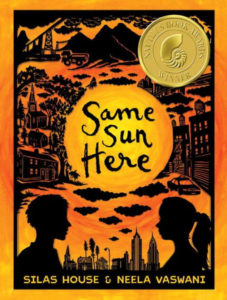 |
By Silas House and Neela Vaswani, Same Sun Here (Candlewick, 2013) is written as an exchange of letters between Meena – an immigrant from India living in New York City – and River, a Kentucky coal miner’s son. Their two lives are very different – but prove to have much in common. A wonderful story of friendship for ages 9-12. |
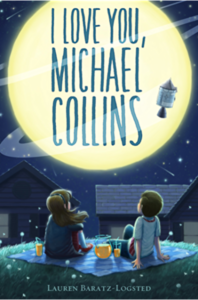 |
In Lauren Baratz-Logsted’s I Love You, Michael Collins (Square Fish, 2018), it’s 1969 and Mamie’s class has been assigned a project of writing letters to astronauts. Everyone picks either Neil Armstrong or Buzz Aldrin; only Mamie chooses Michael Collins. Through her letters, however, that tell about her family troubles, it becomes clear why she made her choice: because someone has to stay with the ship so that everyone else can get safely home. For ages 9-12. |
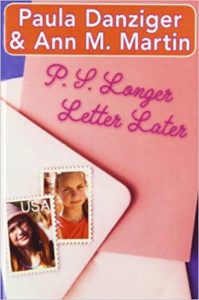 |
By Ann Martin and Paula Danziger, P.S. Longer Letter Later (Scholastic, 1999) is written in the form of alternating letters between seventh-grade best friends Tara and Elizabeth. Tara’s CHARENTS (CHildlike pARENTS) have moved her to another town, and the girls maintain their friendship and solve their problems and deal with the changing circumstances of their families through the mail. The two are totally different – Elizabeth is quiet and conservative; Tara likes glitter, nose rings, and fluorescent shoelaces – but both voices are genuine, funny, emotional, and compelling. There’s a sequel, Snail Mail No More, in which Tara and Elizabeth move on to email. For ages 9-12. |
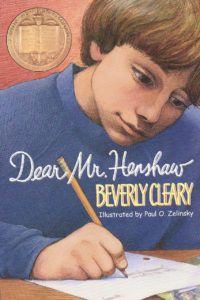 |
In Beverly Cleary’s Dear Mr. Henshaw (Avon, 2000), sixth-grader Leigh Botts confides his troubles – his parents’ divorce, the pain of being the new kid in town, the creep at school who steals from his lunch bag – in letters to his favorite author, Mr. Henshaw. Who writes back, asking Leigh ten questions about himself. It’s the start of a beautiful friendship. For ages 9-13. |
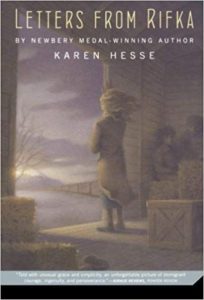 |
In Karen Hesse’s Letters from Rifka (Square Fish, 2009), set in 1919, 12-year-old Rifka and her family flee Jewish persecution in Russia and come to America. Rifka records her experiences, trials, and tribulations in letters to her cousin Tovah – letters she will not be able to send – written in a book of Alexander Pushkin’s poems. An emotional and courageous account of the immigrant experience for ages 10 and up. |
| Also see Immigrants and Refugees. | |
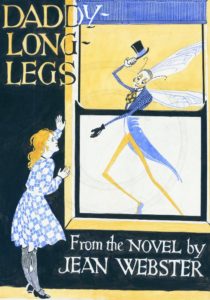 |
Jean Webster’s Daddy-Long-Legs (Puffin, 2011) – originally written in 1912 – is the story of Jerusha Abbott, raised in a foundling asylum, and sent to college by an anonymous trustee with the stipulation that she write him a letter once a month about her studies. Jerusha (nicknamed Judy), a talented writer with a sense of humor, tells the story of her life through a wonderful one-sided correspondence with the mysterious patron that she calls “Daddy-Long-Legs.” And there’s a romance. For ages 9 and up. |
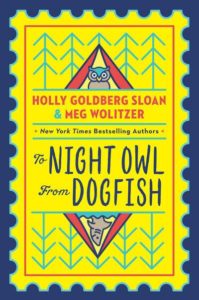 |
To Night Owl from Dogfish by Holly Goldberg Sloan and Meg Wolitzer (Dial, 2019) is the story of Avery Bloom and Bett Devlin – two very different girls from opposite ends of the country – who, when their dads fall in love, are sent to sleepaway camp together in hopes that they’ll form a bond. The story is told in the modern equivalent of letters: email and text messages. Funny and heartwarming for ages 9-12. |
